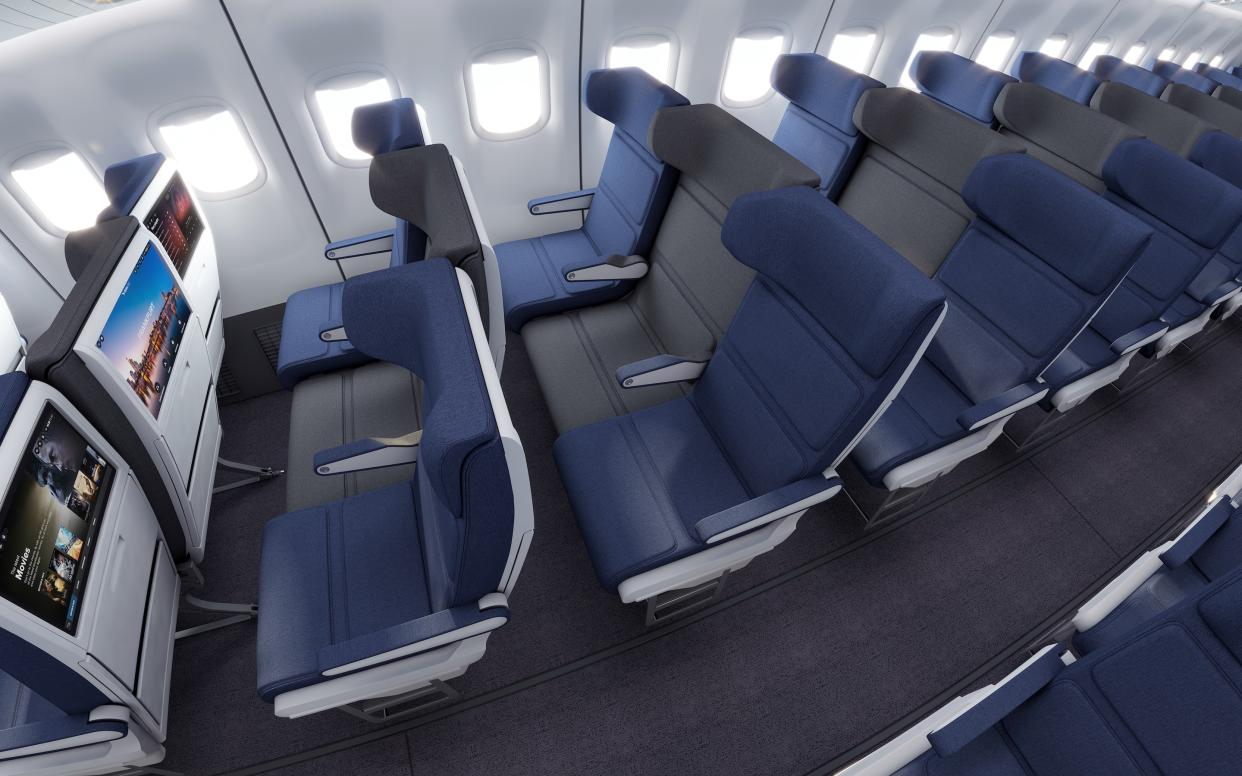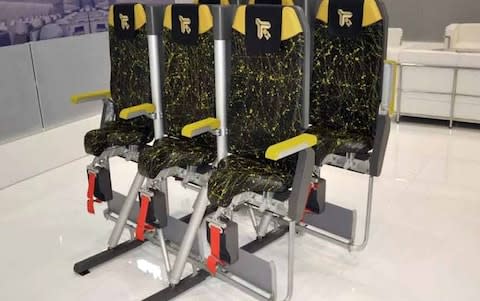A new plane cabin design claims to have made the middle seat bearable

At long last, the most unpopular seat on a plane is getting a revamp that claims to solve its key associated miseries: its occupant having less space, and without sole ownership of an armrest.
A new staggered seating system dubbed the ‘S1’ has, after five years of development, been approved by America’s Federal Aviation Administration (FAA). At least one US airline has already ordered it, to be installed on 50 aircraft by the end of the year.
Upon first inspection, the design doesn’t look so radical, slotting the middle seat a few inches behind and below its neighbours. But this simple tweak to the layout affords the middle seat an extra three inches of width, plus rights to both armrests.
Still not convinced? Apparently, the seats, formulated by Denver-based airline interiors firm Molon Labe Designs, need to be sat in to be believed. “Our main sales tool is to ship seats to airlines so they can sit in them,” founder Hank Scott told The Fast Company.
“I have watched this several times – airline executives see the seat, nod their head and then say they get it. Then we ask them to actually sit down, next to a big fella. Within a few seconds they [really] get it – they stop being an airline executive and switch into passenger modes.”
The animation below does a good job of illustrating how the system works.
While various other cabin designs over the years have proposed wider middle seats, this layout doesn’t “steal width” from the adjacent seats. Scott points out: “If you’re in the aisle or window seat, you couldn’t possibly steal the entire armrest – your elbows would be behind your back at a weird angle.”
Additionally, the aisle seats have an optional “side-slip” function that slides sideways to temporarily allow more aisle space. Executive vice president Thomas Conrady tells Telegraph Travel: “This sliding motion doubles the aisle width during boarding, which reduces the time it takes by between 20 and 30 per cent, thus reducing stress for passengers, cost for airlines and emissions on the ground for everyone.”
Explaining the mechanism further, he states: “Once a passenger comes to the seat, it can be easily pulled out, locks itself into place and is ready to be sit upon. It can even slide with the passenger sitting on it. Obviously, the aisle at that point returns to its normal width (if both seats are moved), but until the very last passenger has boarded, there is still the benefit of the wider aisle.”

Currently, these will serve only short- to medium-haul economy aircraft configurations, and, until UK-approved, not on British airlines. But still under development is the S2, built for long-haul cabins, with more padding, a recline function, and the added advantage of entertainment screens that would be the largest in the industry at 15.6 inches.
Promising more space and better comfort, these seats are the antithesis of the Skyrider, a design that we’ve been seeing in various guises for years now but are yet to snapped up by an airline.
Italian design firm Avio Interiors used the Paris Air Show in June to show off its latest iteration, the Skyrider 3.0, promising “ultra high density” seating to carriers looking to squeeze as many passengers as possible into its planes.

The concept would make it possible for aircraft to have 20 per cent more seats, with “low maintenance costs”; so a typical Boeing 737 belonging to Ryanair, whose chief executive Michael O’Leary has been attracted to the idea in the past, could have 227 seats instead of 189.
Skyrider, which has been in the pipeline for a decade, would have passengers travel in a supported stance, with a thin seat and arm-rest dividers. The “seats” are somewhat padded and afford 23 inches of legroom, or “pitch”, compared to a typical 30.
The middle seat experience would appear to be as miserable as ever.
How else could flying change in the future, for better or worse? More turbulence, for one thing, and 17 other things to look forward to.
Inspiration for your inbox
Sign up to Telegraph Travel's new weekly newsletter for the latest features, advice, competitions, exclusive deals and comment.


